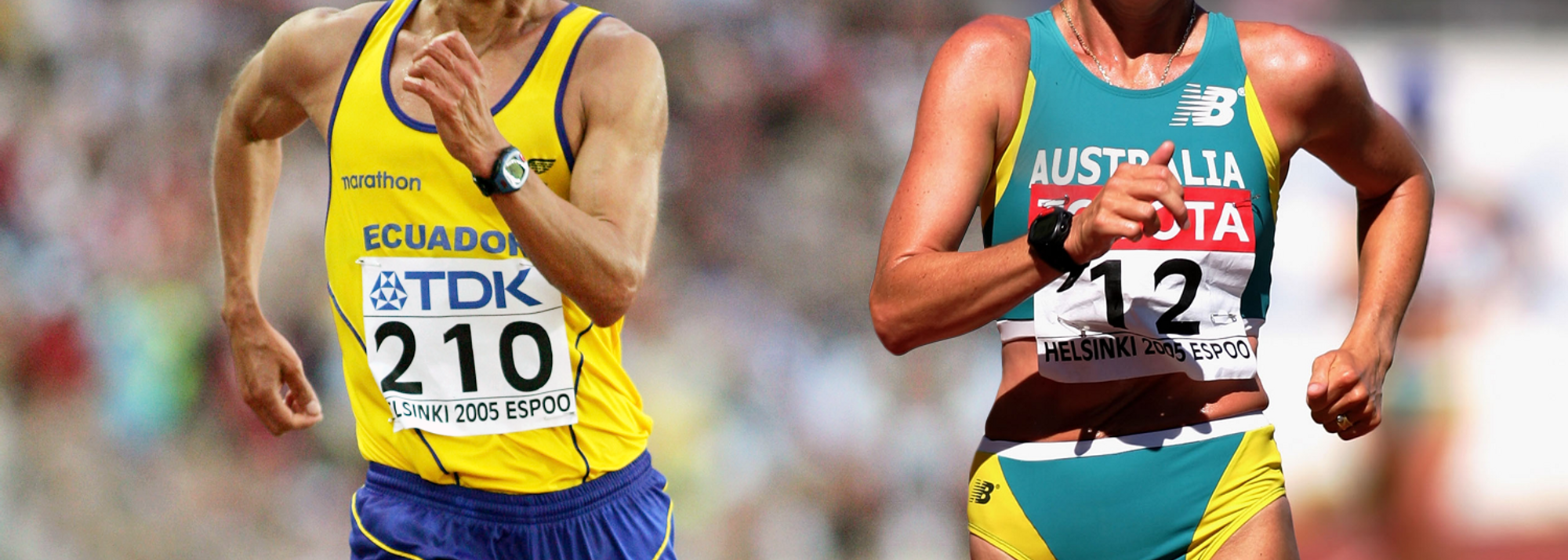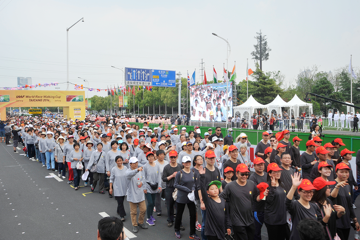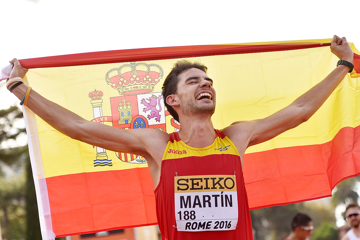Jefferson Perez and Jane Saville (© Getty Images)
In the first of our Way of the walk series ahead of the IAAF World Race Walking Team Championships Taicang 2018 which takes place in the Chinese city on 5-6 May, we chat with 1996 Olympic 20km champion Jefferson Perez of Ecuador and Australia’s 2004 Olympic 20km bronze medallist Jane Saville to find out more about the discipline's loss of contact rule.
Loss of contact is one of the key rules of race walking and the offence can lead to a red card and eventual disqualification. Can you explain more about loss of contact?
Jane Saville: Loss of contact is when both feet are not in contact with the ground. What is important to say is this is judged by experienced officials with the use of the naked eye not by video or TV slow motion playback. Also, it is a mistake to say that in this instance the race walkers are ‘running’ because the technique used (to race walk) is quite different. I don’t believe any race walker goes out to deliberately lift (loss of contact).
Is loss of contact difficult to judge?
Jefferson Perez: Loss of contact is subjective, much like refereeing a boxing fight or scoring a gymnastics routine. The judges are very experienced in race walking and we have to respect them. But maybe we do need to work a little more on making the loss of contact rule a little less subjective. I know the technology is out here with an insole device, which could help make a same impact such as heart rate monitor innovation did more than 20 years ago.
Who would be a good example of boasting a proficient race walking technique?
JS: I would look at someone like Jefferson Perez. He was always so beautiful, so smooth. He always looked so relaxed, whereas if you look at someone like me, with a shorter stride, I am not as pretty or smooth. If you are race walking with a prettier technique you are less likely to stand out from the crowd. A good technician will drive their hips and generally have a longer stride.
How do you best ensure loss of contact not happening?
JS: I think a low centre of gravity helps. If you are low to the ground and your hips are down this is a better look. The reverse of this is, if your shoulders are up high and walking a certain way, it can give a bad impression to the judges. Sometimes it can look like you are lifting (loss of contact), even when perhaps you are not.
JP: When I was competing, I did a lot of video analysis of my technique often between two to three times per week. I recall when I was training for the 2003 World Championships in Paris we measured that my stride was exactly 1.25m but in 2004, in the countdown to the Athens Olympics, my stride was 1.30m. This caused me many issues with my lower legs and I realised a 1.25m stride was the right one my body. The video analysis allowed me to make that adjustment.
At any stage of your career did you have a problem with loss of contact and how did you remedy that?
JS: I was not only disqualified at the 2000 Sydney Olympics but also in 2001 at the World Championships and Australian Championships. For me, it was down to a lack of strength in that my body was going faster than I was technically capable. Flexibility, particular in the hips, was important to develop. It was important to develop the glutes and to activate them with specific exercises otherwise a race walker can be prone to overworking the hamstrings and adductors. I recall in the final years of my career, my strength and conditioning coach designed a skateboard that was a little longer than my foot in length and attached it to a pulley system. I put one leg on the board and the other on some blocks and then transferred my weight on the board to simulate the race walking technique. It helped as a leg strengthening exercise specific for race walking.
What technical advice would you give any young race walker?
JS: To keep it simple. Try and stride out and have the heel strike the ground first. It is much better to have your toe up and make the stride long. Lower your arms and keep relaxed.
Steve Landells for the IAAF







